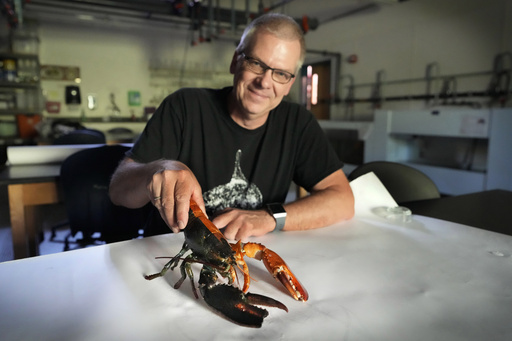In recent times, an array of uniquely colored lobsters, ranging from orange, blue, calico, two-toned, and even cotton-candy hues, have been spotted by fishers, seafood markets, and scientists across various locations like Maine, New York, and Colorado. These oddly colored crustaceans have captured attention for their rarity, with some estimates suggesting that baby blue lobsters, often likened to “cotton-candy colored,” may be as uncommon as 1 in 100 million.
While these colorful lobsters may seem extraordinary, scientists are delving into the genetic and dietary factors that can influence lobster coloration. According to Andrew Goode, a scientist at the University of Maine, lobster hues can vary due to genetic mutations affecting shell pigment proteins. Despite the striking appearances of these lobsters, Goode mentioned that anecdotally, their taste doesn’t differ from traditionally colored lobsters.
Although estimates like 1 in 1 million for blue lobsters and 1 in 30 million for orange lobsters are often cited, researchers caution that these figures may not be entirely accurate. Markus Frederich, a marine sciences professor at the University of New England, highlighted the need for more comprehensive tracking of lobster color abnormalities. Frederich and his team are actively researching noninvasive methods to study the genetic basis of rare lobster shell colors, aiming to gain a deeper understanding of these unique traits.
Frederich has been closely monitoring a collection of peculiarly colored lobsters at the university, including an orange lobster named Peaches, who recently had thousands of offspring. Despite Peaches’ vibrant coloration, the majority of the surviving baby lobsters displayed regular colors, revealing the complexity of shell color inheritance in lobsters. By analyzing the DNA of these unusual lobsters, scientists hope to unravel the mechanisms behind their distinctive appearances.
The prevalence of these rare lobsters is not entirely surprising given the scale of the U.S. lobster fishery. Richard Wahle, a retired lobster researcher from the University of Maine, emphasized that with the substantial annual lobster catch exceeding 90 million pounds in recent years, encountering oddly colored lobsters, even at odds like 1 in a million or 1 in 30 million, is expected. As researchers continue to explore the genetics of these fascinating crustaceans, the mystery behind their vibrant hues deepens, adding a unique perspective to the world of lobster science.



